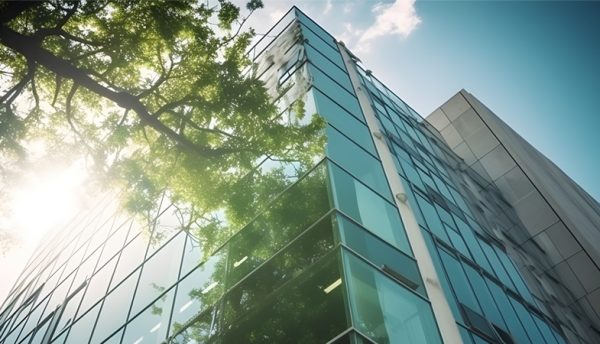As the deadline for climate neutrality nears, the lack of renewable strategies seeks to cause issues for data centre owners and operators. Richard Churchill, Director of Sales, n2s, discusses the impact of a truly circular IT asset and life cycle management regime and how conserving precious resources will aid ethical and sustainable practices.

Most data centre owners and operators are well aware of the necessity to implement carbon emission savings strategies. Most leading operators now offer customers 100% renewably sourced energy options and are leveraging more intelligent water and energy-saving cooling solutions. A few are evaluating new types of fuel sources including cells and even vegetable oil in place of diesel for backup generators. Direct connection to solar and wind energy via on-site battery storage is a further welcome initiative. Adherence to sustainable practices for buildings construction, operation and maintenance – BREEAM for example – is also increasingly common in the industry.
However, to reach climate neutrality by 2030, in line with the EU Climate Change Pact Agreement and Net Zero by 2050, there’s still much to do. The clock is ticking towards mandatory and far more measurable climate change commitments. Meeting Scope 1 and 2 is one thing which is largely within the control of the data centre owner or operator in terms of direct and indirect emissions produced from energy owned or purchased. But maintaining control of energy consumption and carbon emissions while keeping pace with exponential demand for compute and storage is a tall order. Especially with more onerous Scope 3 emissions compliance looming which will encompass the entire data centre supply/value chain.
Those that fall short risk the potential of fines, reputational damage and losing business. By the same token those that succeed in managing and continuously proving their carbon emission reduction credentials stand to gain significant competitive advantage.
Searching for clues
The solution lies in achieving a fully sustainable, truly circular and accountable IT asset life cycle management regime. This remains the major untapped area for data centres and the wider IT industry to decarbonise and comply with Scope 3.
This is a challenge. While owners of on-premises data centres may have direct control over purchasing of IT assets, compared to third-party operators whose customers and/or lease finance providers are responsible for sourcing the kit, all data centres are heavily impacted by the sustainability policies and actions of the technology hardware manufacturers. Those of their distributors, systems integrators and resellers too. They are all part of the supply/value chain.
Unfortunately, too many manufacturers are still lacking when it comes to offering modular upgrades of equipment, leading to the rip-and-replace culture for hardware assets such as servers, PCs, laptops, network kit and cabling every three-to-five years. The underlying issue so far is there’s little or no incentive (financial or legislative) for manufacturers or their customers to facilitate asset reuse or recycling. Manufacturers, therefore, remain vested in selling ‘net new’ rather than conserving or extending the life of existing hardware equipment.
Such wastage is amplified by a prevailing strategy to minimise the cost associated with IT disposal rather than find ways of maximising reclamation of components and precious rare earth metals which are in finite supply. Adding to the growing e-waste mountain is the conventional approach to secure disposal of data which all too often results in the destruction of serviceable hard drives. There are proven, secure and compliant software solutions available for wiping old data rather than wholesale hardware destruction.
An inconvenient truth
The pre-use manufacturing phase accounts for 70-90% of hardware equipment’s total embodied carbon. The virgin precious metals and rare earths being mined for use in PCB manufacture and their subsequent extraction at end-of-life through acids or smelting accounts for the majority of this. A PCB can contain over 40 of these including gold, copper, silver and palladium. The UN puts the value of wasted rare and precious metals contained on PCBs at US$62.5 billion per year.
Therefore, any data centre striving to meet its own decarbonisation goals and obligations cannot do so singlehandedly. It is largely beholden to the supply chain stakeholders upstream who need to do much more concerning the longevity and reusability of equipment. At the same time data centre customers/users and their lease finance providers need to be encouraged to accept and enable longer usage periods through regular maintenance programmes, refurbishment, resell and reuse. All concerned must pursue ethical and sustainable product end-of-life recycling practices.
In this regard, engaging the services of licensed and regulated WEE IT asset disposal (ITAD) operators can extend typical three-to-five-year product lifetimes by as much as another five years. Materials recovered such as gold, copper and steel can go back into manufacturing streams and once again become part of the technology manufacturing process, completely closing the life cycle loop.
Clearly, a key success factor in effectively closing the loop is a more sustainable and ethical method of extraction and recovery of PCB materials. To address this, bioleaching, an arm of biotechnology that uses bacteria to oxidise and leach out the metal content, is emerging as a potential game-changer – and an area which our sister company, Bioscope Technologies, is pioneering. The PCB materials are being reclaimed, conserved and recycled without the use of harmful acids.
Granular reporting
Underpinning any circular IT solution must be the ability to accurately measure and audit the entire Scope 3 CO₂e life cycle for IT at the asset level. For users and data centres, the equipment usage and post-usage stages of equipment life cycle management are the only ways of reclaiming and redressing the energy expended during the IT equipment manufacturing phase.
Until recently there has not been a data lake available that joins all these life cycles together to enable organisations to form a net zero position. This is changing with the emergence of granular reporting tools that provide a full understanding of the environmental position. These will enable data centre owners and operators to drive decisions that support their own sustainability reduction targets as well as inform those of their customers – from equipment procurement to retention and at the disposal stage.
In summary, as the focal point for the enablement of enterprise IT, colocation, cloud computing and carrier connectivity – in fact, the very pillar of the digital economy – the data centre industry is ideally placed to take a much more active role in decarbonising the tech industry, in lobbying manufacturers and canvassing customers about the necessity and benefits of dissing conventional linear practices in favour of circular IT life cycle management and recycling solutions. Such an approach will not only help decarbonise data centres but the entire supply chain and help conserve precious resources.
Click below to share this article


